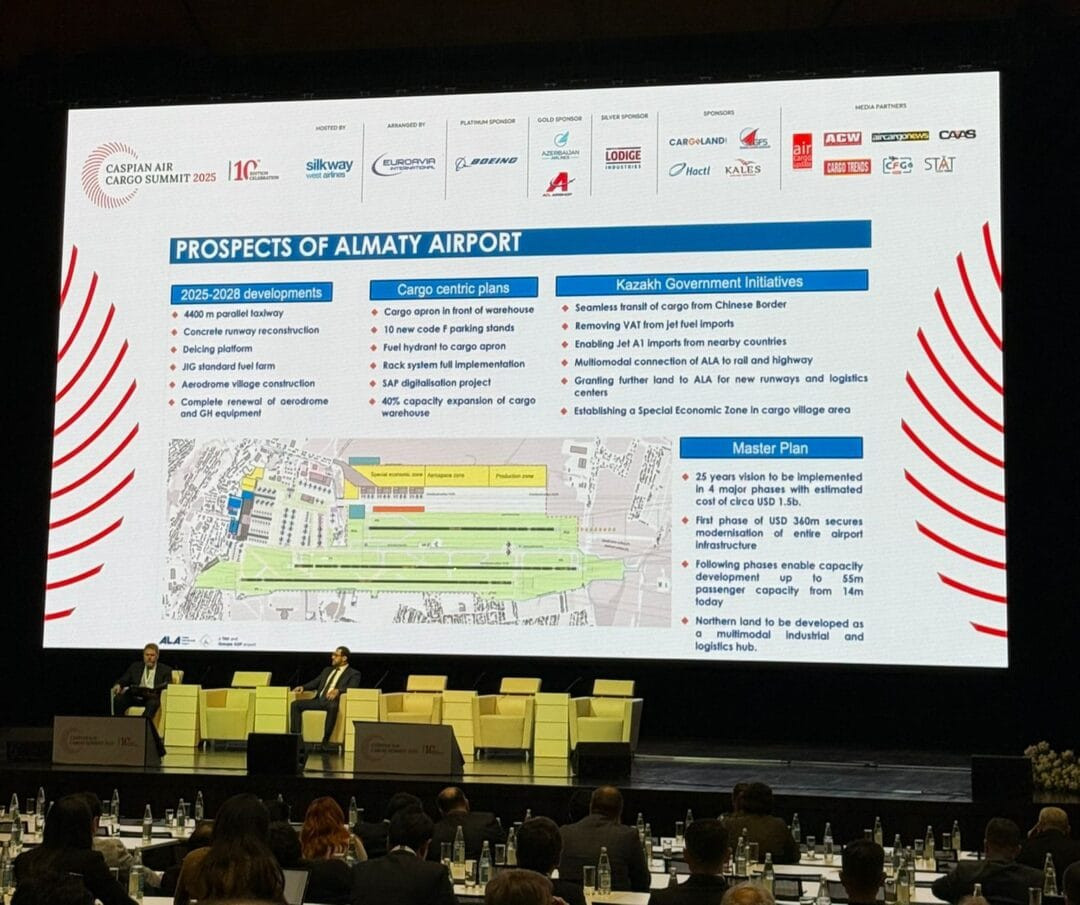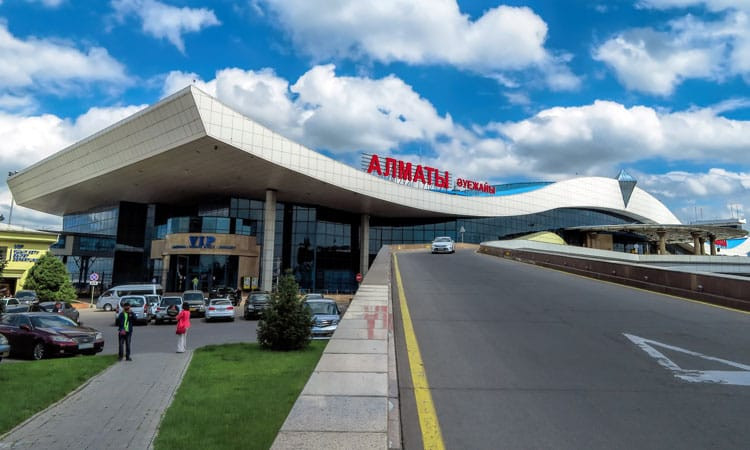When Russia’s invasion of Ukraine closed off one of the world’s busiest air corridors, Central Asia suddenly found itself at the centre of east–west logistics. Routes that once bypassed the region were forced south, and the “Middle Corridor” – long treated as a geopolitical talking point – became an operational reality.
For Goker Köse, President and CEO of Almaty International Airport, that shift is still playing out.
“Under Covid-19 it was more of a concept, but starting from Covid and after the closure of Russian airspace, it became a mutual reality that the countries located in this corridor are gaining more and more attraction,” he told delegates at the Caspian Air Cargo Summit in Baku.
A region repositioned
Kazakhstan is geographically unavoidable: the ninth-largest country in the world, it sits on the land bridge between China and Europe. But for years, the lack of modern infrastructure kept Central Asian airports on the margins of the air cargo map.
Now, as trade flows reroute, airports from Baku to Tashkent are racing to upgrade facilities. Almaty, the country’s main cargo hub, is positioning itself as a central node. The airport handled around 130,000 tonnes of freight last year, supported by carriers including Turkish Cargo, Silk Way West, Lufthansa Cargo and a growing roster of Chinese airlines.

Köse sees this as only the beginning. “Kazakhstan has become one of the leading actors in the air cargo business in Central Asia,” he said. “We don’t see our neighbouring airports as competitors, but as complementary to the service we are providing.”
That collaborative stance is unusual in a sector defined by sharp rivalries. But in a region still piecing together supply chains and trade corridors, cooperation may prove more realistic than competition.
Almaty’s cargo bet
The airport is not leaving growth to chance. A series of projects is already in motion to expand and modernise facilities. In July, work began on a $200 million overhaul of airfield infrastructure: runway reconstruction, new taxiways, an expanded de-icing platform and a cargo apron with capacity for 10 widebody freighters.
The cargo terminal itself has been re-equipped to handle sensitive products, with new cold storage and a radioactive materials room. Pharma, perishables and high-value goods are all being targeted. Köse’s ambition is clear: “Our aim is to reach 200,000 tonnes in the coming years.”
That is part of a much larger 25-year, $1.5 billion masterplan that foresees passenger and cargo growth quadrupling capacity. The airport’s owners – TAV Airports and its parent company Groupe ADP — are betting that Almaty can transform from a Soviet-era facility into a modern Central Asian hub.
Structural headwinds
Not everything can be solved with concrete and steel. One of the biggest constraints in Kazakhstan has been fuel. For years, limited refinery capacity and high VAT distorted the domestic jet fuel market, forcing carriers to tanker fuel from abroad or pay inflated prices.
Köse acknowledged the challenge but pointed to progress. A VAT reform has eased costs for carriers, while fuel imports from China are starting to balance supply. “The government is aware, and steps have been taken. It is not solved overnight, but we are moving in the right direction,” he said.
The airport is also preparing to align with broader sustainability trends. Electrification of ground support equipment is underway, and Köse signalled that Almaty is watching carefully how EU and US regulators approach carbon accounting for transit hubs. For a market that relies heavily on overflight and technical stops, these rules could be decisive.
A fragile opportunity
Central Asia’s logistics renaissance depends on sustained investment, political stability and the ability to deliver reliable, efficient services at scale. Infrastructure plans are ambitious, but execution will be the test.
For now, Köse remains optimistic. “We believe this is only the start,” he said. “Kazakhstan has a strategic location, and Almaty can play a leading role in connecting east and west.”





